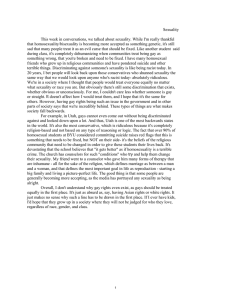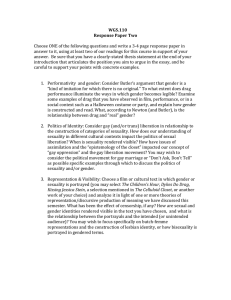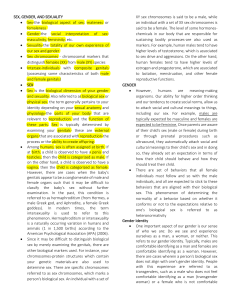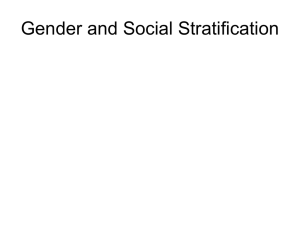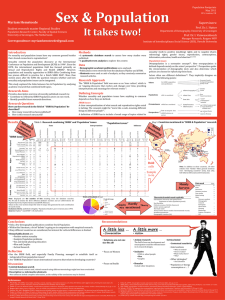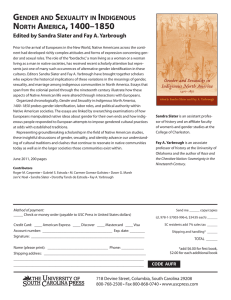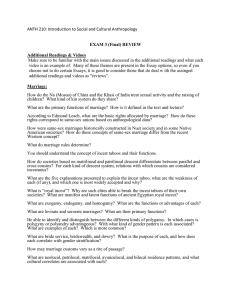GENDER, SEXUALITY & SOCIETY HANDOUT
advertisement
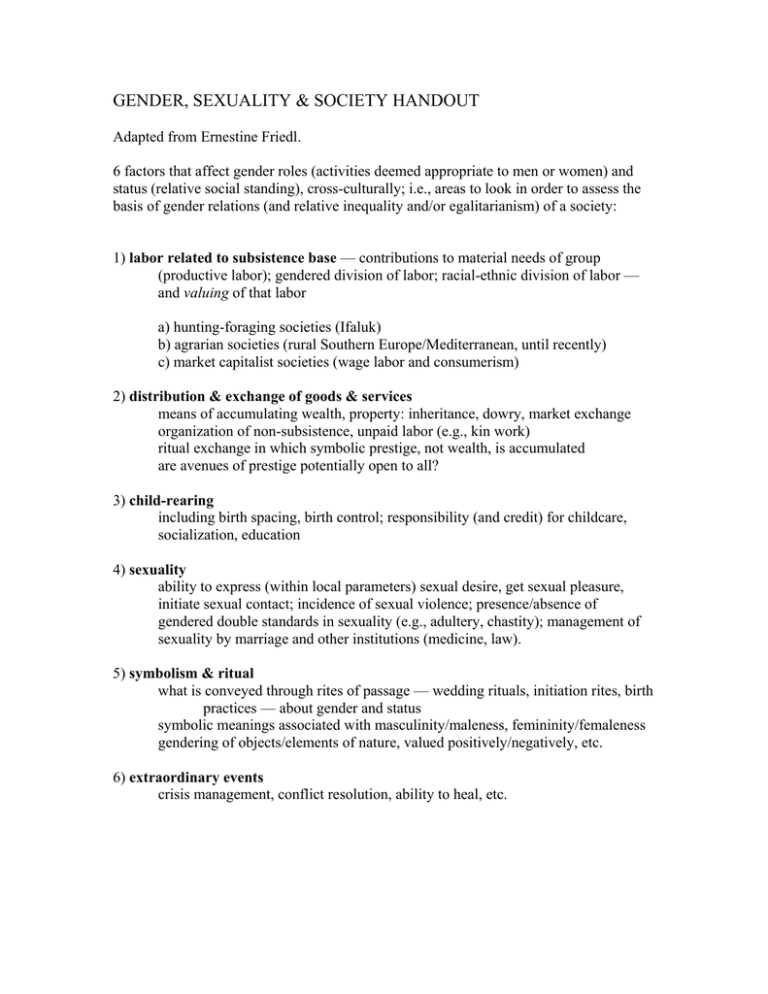
GENDER, SEXUALITY & SOCIETY HANDOUT Adapted from Ernestine Friedl. 6 factors that affect gender roles (activities deemed appropriate to men or women) and status (relative social standing), cross-culturally; i.e., areas to look in order to assess the basis of gender relations (and relative inequality and/or egalitarianism) of a society: 1) labor related to subsistence base — contributions to material needs of group (productive labor); gendered division of labor; racial-ethnic division of labor — and valuing of that labor a) hunting-foraging societies (Ifaluk) b) agrarian societies (rural Southern Europe/Mediterranean, until recently) c) market capitalist societies (wage labor and consumerism) 2) distribution & exchange of goods & services means of accumulating wealth, property: inheritance, dowry, market exchange organization of non-subsistence, unpaid labor (e.g., kin work) ritual exchange in which symbolic prestige, not wealth, is accumulated are avenues of prestige potentially open to all? 3) child-rearing including birth spacing, birth control; responsibility (and credit) for childcare, socialization, education 4) sexuality ability to express (within local parameters) sexual desire, get sexual pleasure, initiate sexual contact; incidence of sexual violence; presence/absence of gendered double standards in sexuality (e.g., adultery, chastity); management of sexuality by marriage and other institutions (medicine, law). 5) symbolism & ritual what is conveyed through rites of passage — wedding rituals, initiation rites, birth practices — about gender and status symbolic meanings associated with masculinity/maleness, femininity/femaleness gendering of objects/elements of nature, valued positively/negatively, etc. 6) extraordinary events crisis management, conflict resolution, ability to heal, etc. MIT OpenCourseWare http://ocw.mit.edu 21A.231J / WGS.455J Identity and Difference Spring 2006 For information about citing these materials or our Terms of Use, visit: http://ocw.mit.edu/terms.




